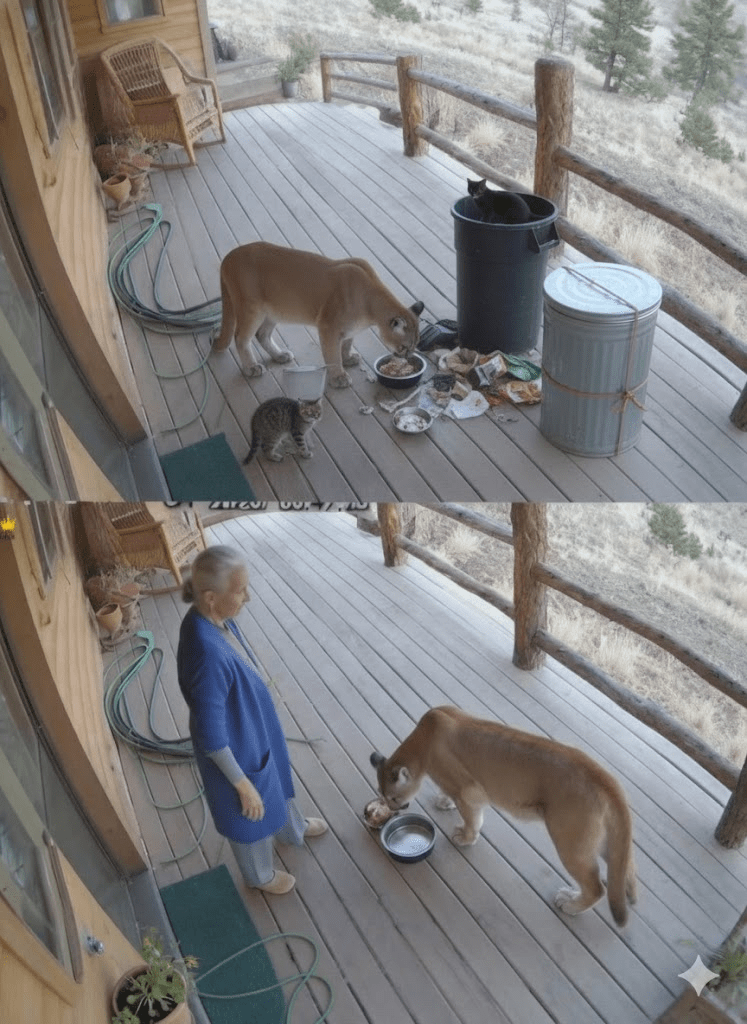In an increasingly urbanized world, the boundaries between human habitation and wild ecosystems are constantly shifting, leading to more frequent and often unpredictable encounters with wildlife. The captivating image above offers a poignant and rare glimpse into such an interaction, showing an individual calmly interacting with a puma on what appears to be a residential deck. This scene is a powerful reminder of the complex relationship we share with nature, highlighting both the potential for peaceful coexistence and the inherent risks when wild animals venture into human spaces. While fascinating, such direct interactions, especially with large predators, underscore the critical importance of understanding wildlife behavior, maintaining respectful distances, and implementing responsible practices to ensure the safety of both humans and animals. This single frame encapsulates a narrative much larger than itself, inviting us to explore the delicate balance required when our worlds intersect with those of creatures like the majestic puma.
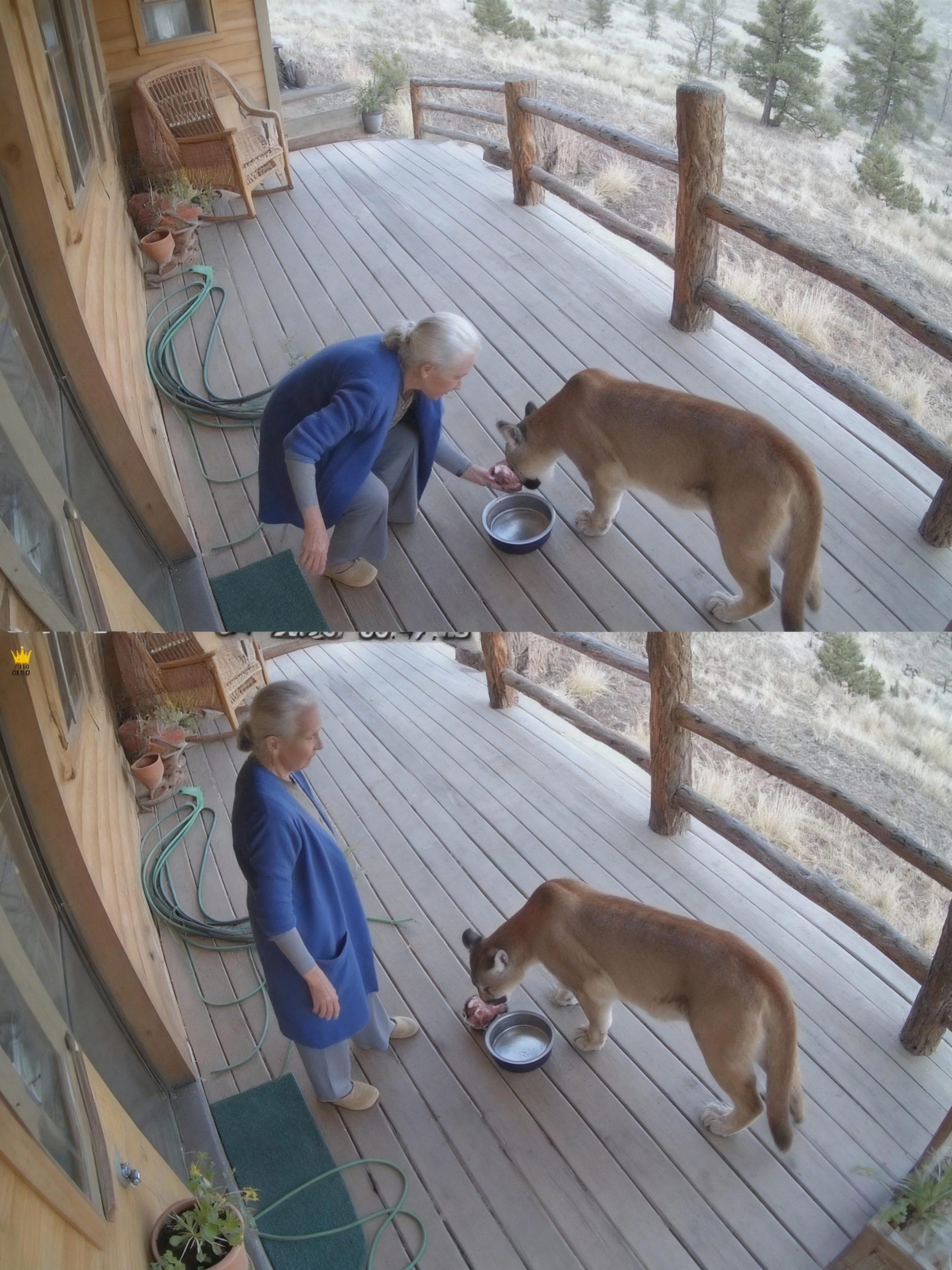
Understanding the motivations behind a puma’s presence near human dwellings is crucial. Pumas, also known as mountain lions or cougars, are apex predators that typically prefer solitary lives in remote, wild territories. However, habitat encroachment, declining natural prey populations, and an abundance of easily accessible food sources in human areas can draw them closer. For instance, domestic pets, livestock, and even refuse can become attractive food options. The puma in the image appears calm, focused on the food offered, suggesting a degree of habituation to human presence. This habituation, while seemingly benign in this specific instance, is often a double-edged sword, as it can reduce a wild animal’s natural fear of humans, leading to increased potential for conflict if not managed responsibly.
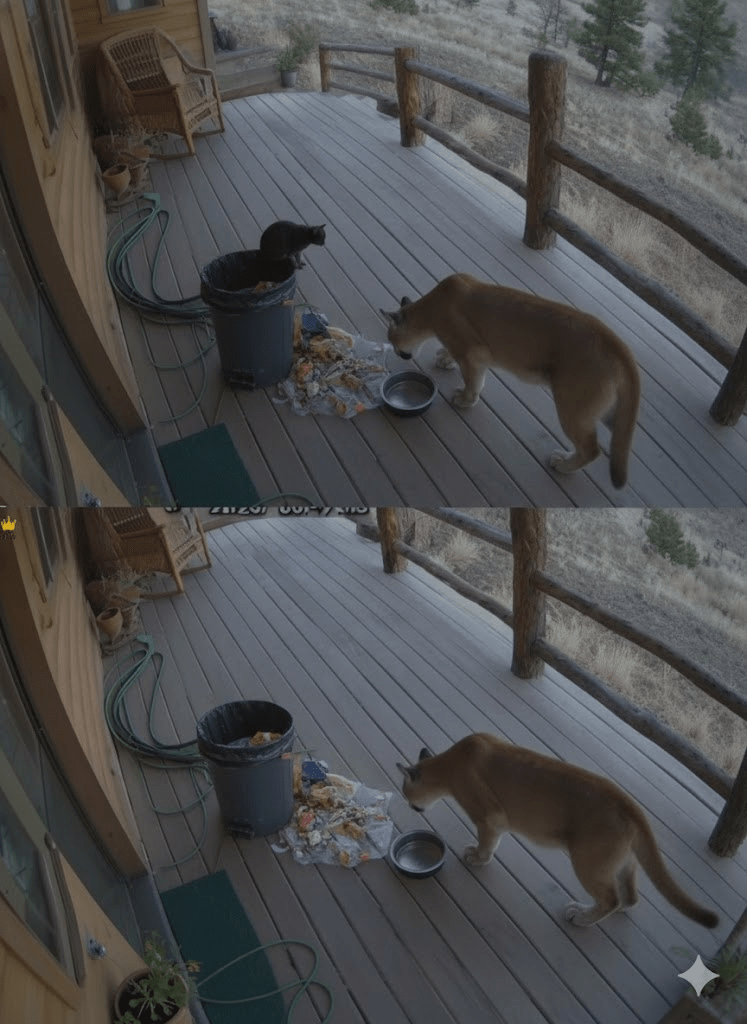
Direct feeding of wild animals, as depicted, is a practice strongly discouraged by wildlife experts and conservation agencies. While it may stem from a place of compassion or curiosity, providing food to wild predators can lead to several detrimental outcomes. It reinforces the idea that humans are a source of food, encouraging animals to approach people and homes more frequently. This can diminish their natural hunting instincts and make them reliant on human provisions, ultimately harming their long-term survival in the wild. Furthermore, habituated animals may become bolder, potentially posing a threat to pets, livestock, or even humans, necessitating interventions that sometimes involve relocation or, in extreme cases, euthanasia.
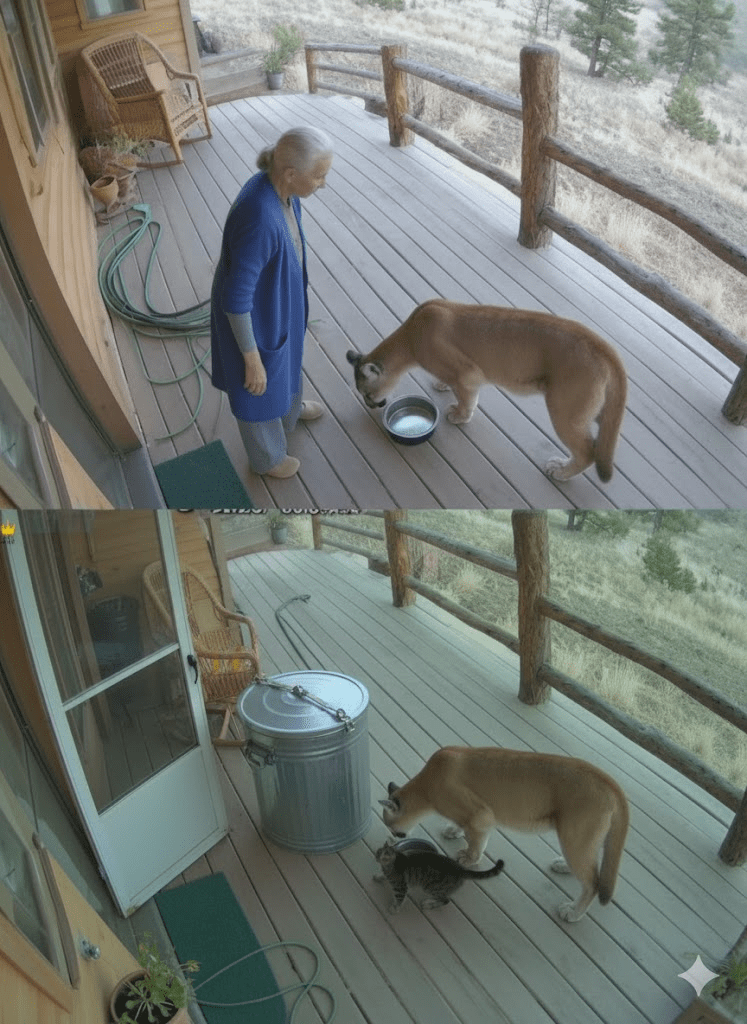
The woman in the image displays a remarkable calmness, which is both admirable and concerning. While it’s generally advised to avoid any direct engagement with pumas, her composure might suggest a prior, albeit likely infrequent, history with this particular animal or a deep understanding of wildlife. However, it’s critical to remember that pumas are powerful and unpredictable wild animals. Their behavior can change in an instant, especially if they feel threatened, cornered, or if their young are perceived to be in danger. Maintaining a safe distance and observing from afar, ideally from indoors or a secure vehicle, is always the safest course of action when encountering a large predator.
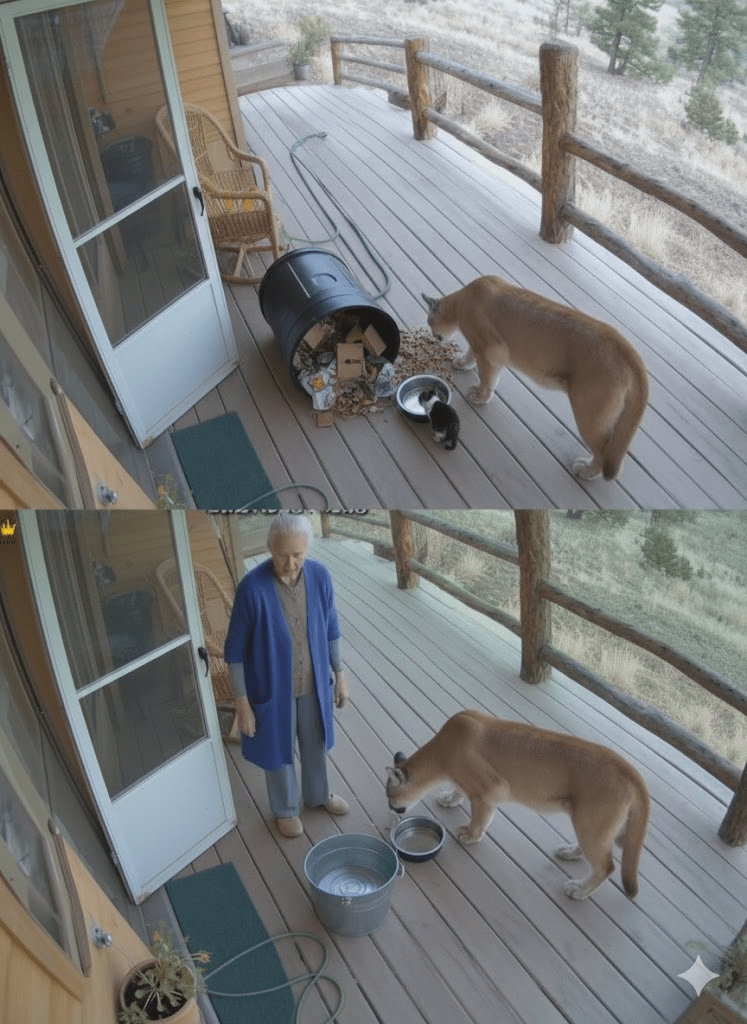
Responsible wildlife management and coexistence strategies are essential for reducing human-wildlife conflict. This includes securing trash bins, never leaving pet food outdoors, keeping pets indoors or in secure enclosures, and fencing off gardens or livestock. Landowners in puma territories should also consider “hazing” methods – harmless ways to scare away wildlife – to reinforce their natural wariness of humans. Education plays a vital role in empowering communities with the knowledge to react appropriately during wildlife encounters and to understand the broader ecological implications of their actions.
